|
|
|
|
Target-oriented least-squares migration/inversion with sparseness constraints |
 shots ranging from
shots ranging from
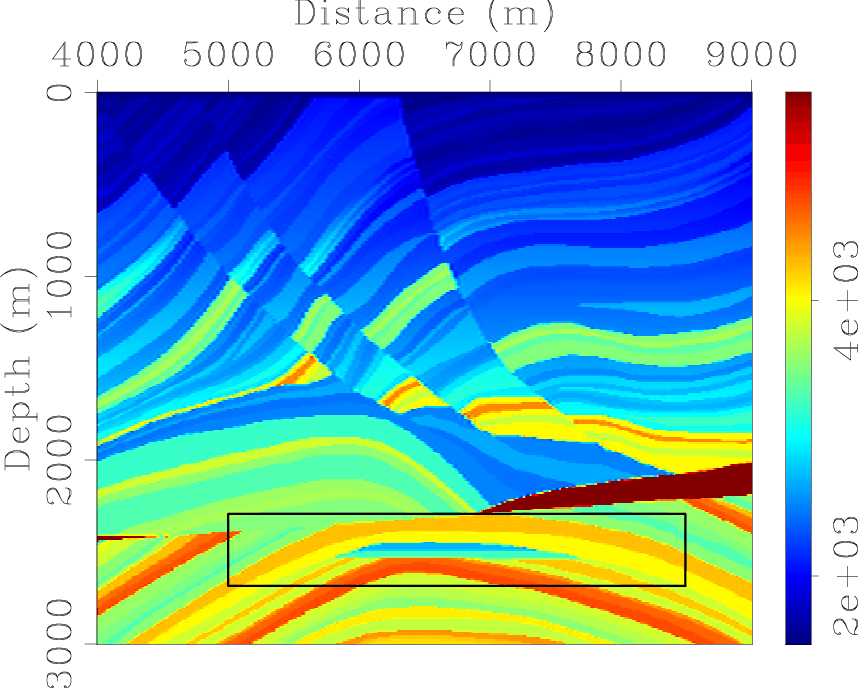
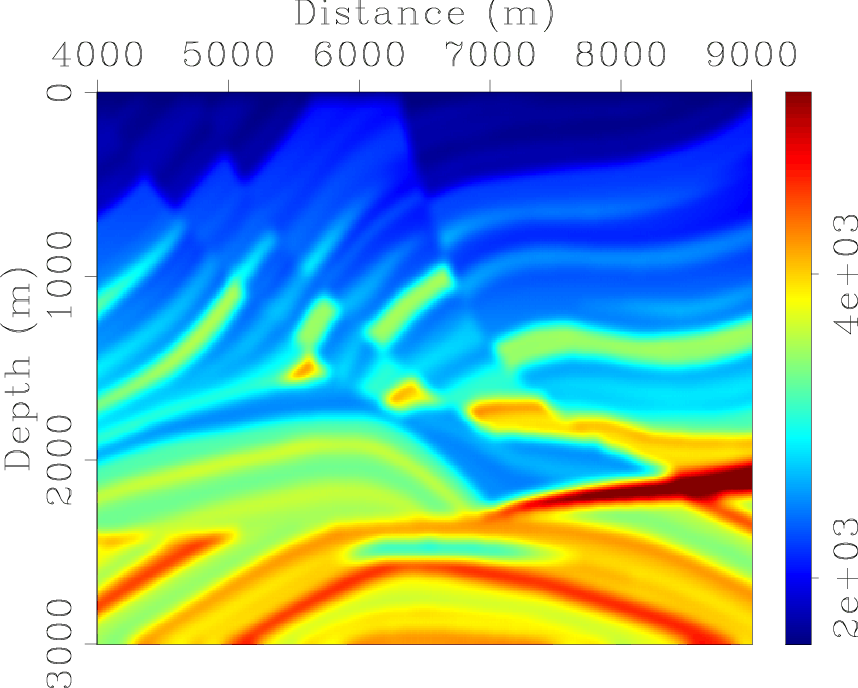
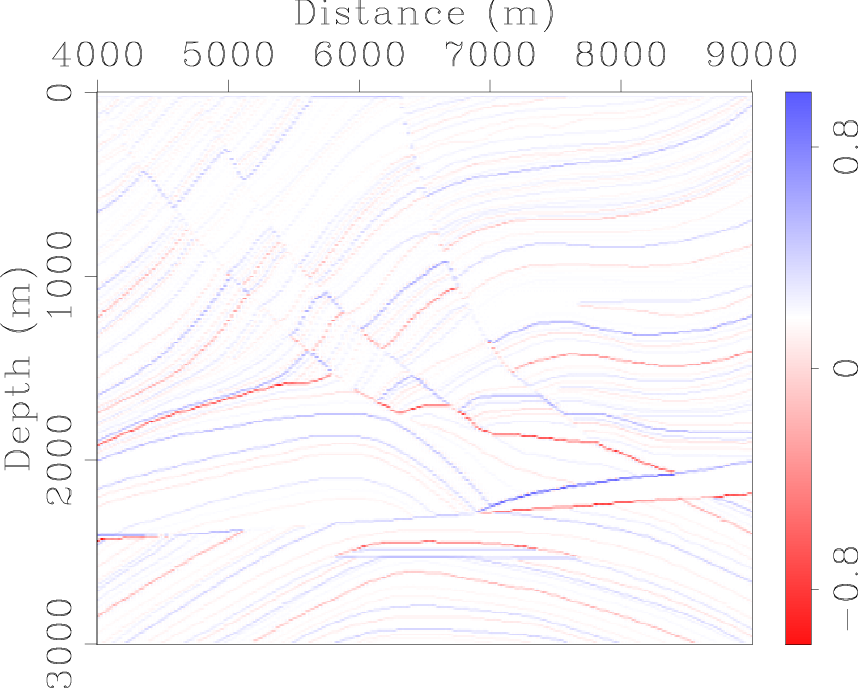
|
|---|
|
marm-vmod-stra,marm-vmod,marm-refl
Figure 3. The Marmousi model. Panel (a) is the stratigraphic velocity model used for two-way wave-equation finite-difference modeling. Panels (b) and (c) are the background velocity model and reflectivity model used for one-way wave-equation Born modeling. [ER] |
|
|
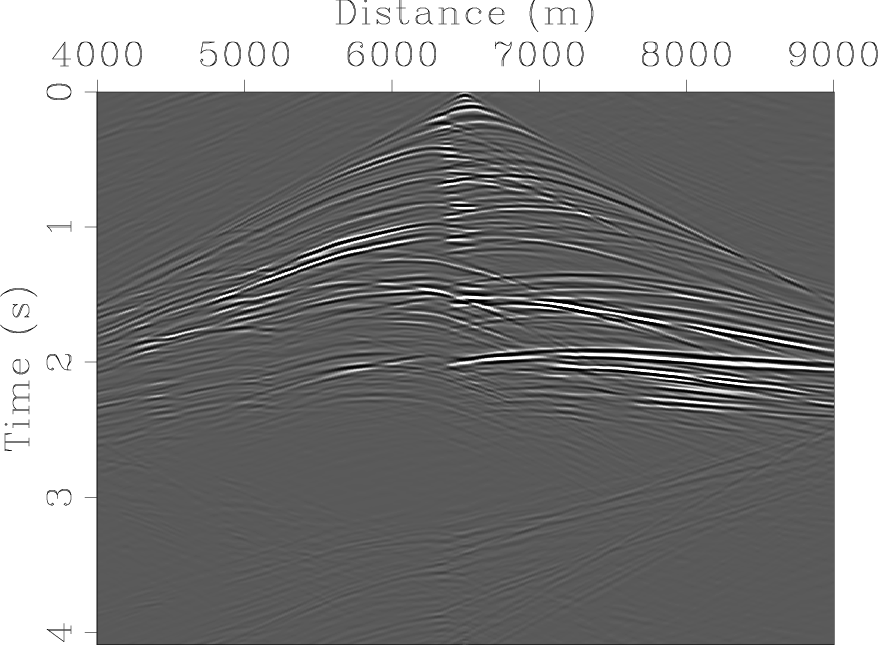
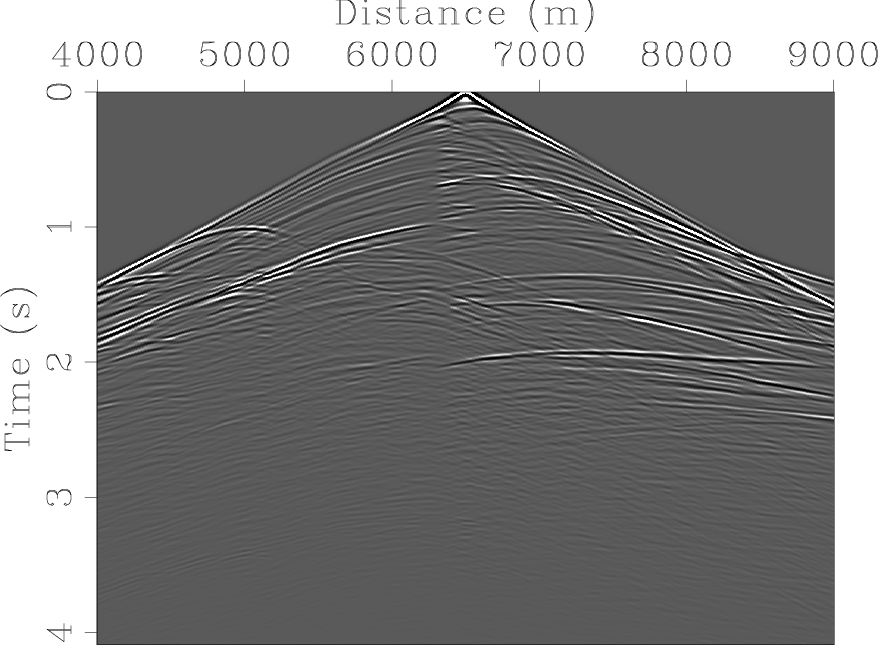
|
|---|
|
marm-trec-one-way,marm-trec-two-way
Figure 4. Comparison between shots synthesized using (a) one-way wave-equation Born modeling and (b) two-way wave-equation finite-difference modeling. [CR] |
|
|
The target zone selected for inversion tests is outlined with a small box in Figure 3(a),
a close-up look is also shown in Figure 5(a). The target zone is where the reservoir locates.
The target-oriented Hessian is computed using the receiver-side random-phase encoding (Tang, 2008a,b).
The smooth background velocity model (Figure 3(b)) and the Fourier finite-difference (FFD) one-way extrapolator (Ristow and Rühl, 1994)
are used for migrating both one-way and two-way data and also for the Hessian computation.
Figure 5(b) illustrates the diagonal elements of the phase-encoded Hessian for the target area (the amplitude is normalized).
Note the uneven illumination due to the limited acquisition geometry and complex velocity model.
Figure 6 shows the truncated local Hessian filters for three different image points
(three rows of the truncted Hessian). The size of the filter is
![]() in
in ![]() and
and ![]() directions, which seems to be big enough to capture most
of the energy in the Hessian matrix.
directions, which seems to be big enough to capture most
of the energy in the Hessian matrix.
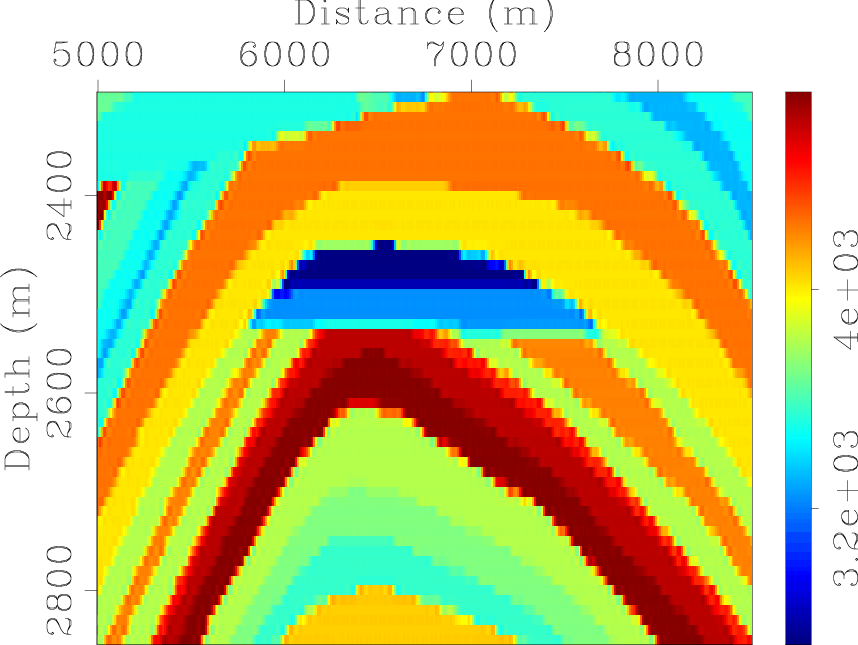
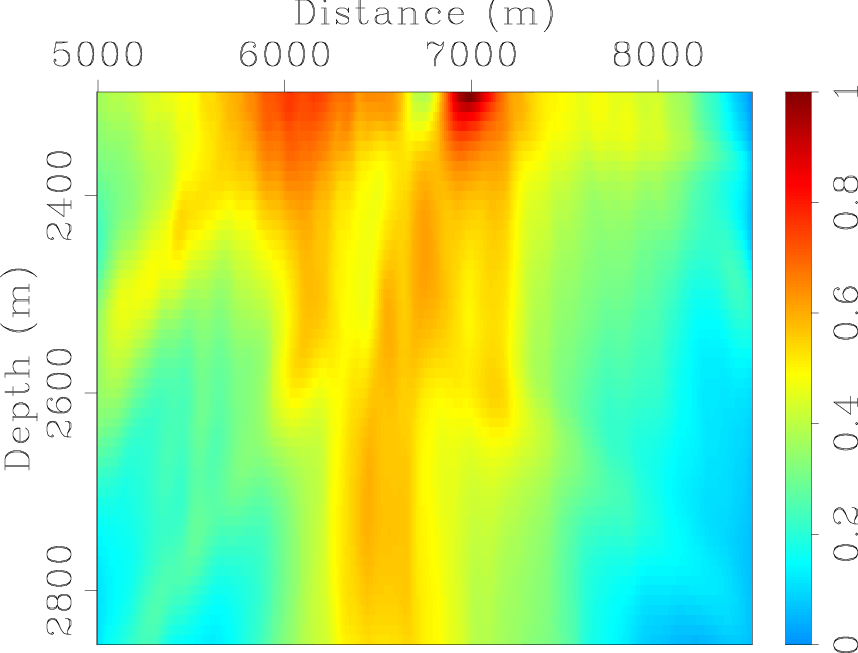
|
|---|
|
marm-stra-target,marm-hess-diag-target
Figure 5. (a) The stratigraphic velocity model for the target zone. (b) The diagonal of the Hessian for the target zone. [CR] |
|
|
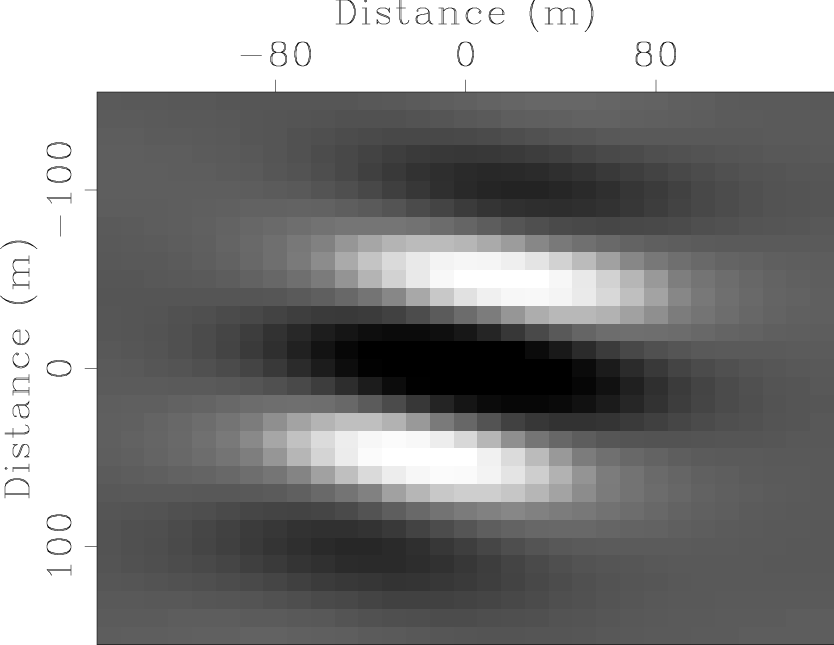
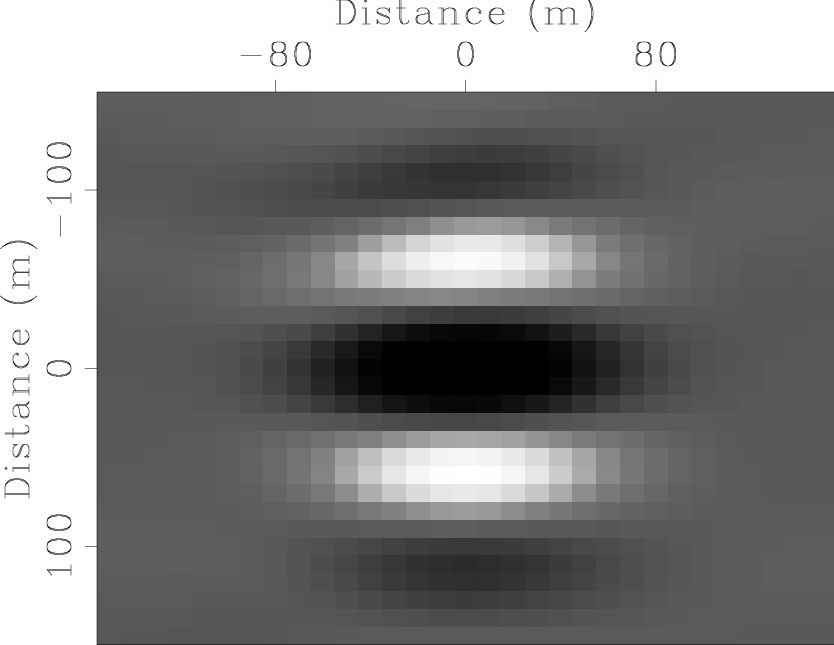
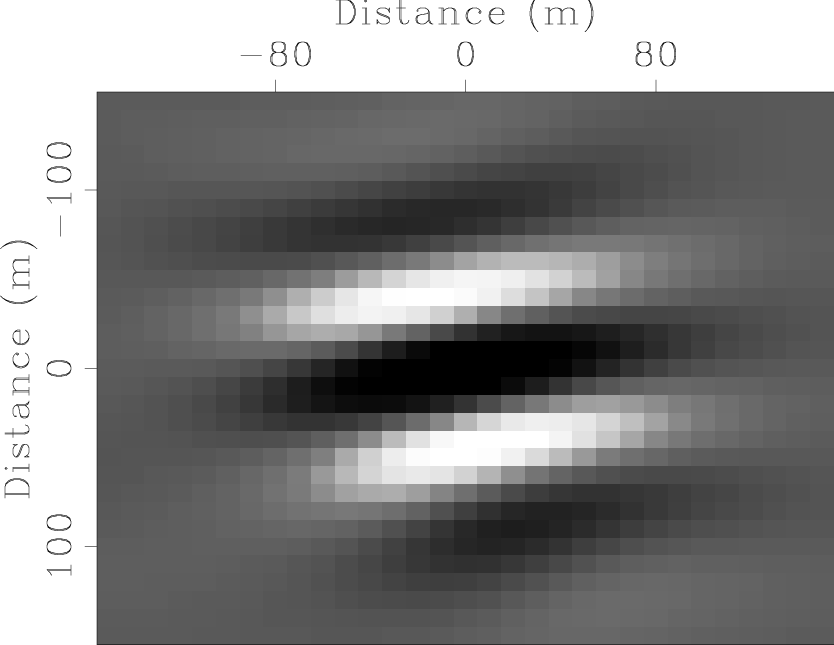
|
|---|
|
marm-hess-offd-target-1,marm-hess-offd-target-2,marm-hess-offd-target-3
Figure 6. The local Hessian filters at (a) |
|
|
Figure 7 shows the inversion results
on the one-way wave-equation Born-modeled data. This example represents the ideal case for one-way wave-equation inversion,
since our modeling operator can "explain" all the physics present in the "observed" data (Figure 4(a)).
As expected, migration produces a blurred image (Figure 7(b)); the regularized inversion schemes
optimally deblur the migrated image,
and the reflectivity is better recovered (Figure 7(c) and Figure 7(d)).
Note that both inversion schemes enhance the spatial resolution.
Also note that regularization with the sparseness constraint produces slightly higher resolution
than regularization with the standard ![]() -norm damping and Figure 7(d) is closer to the true reflectivity
shown in Figure 8(a). This suggests that the sparseness constraint better predicts the model covariance,
so that it more effectively reduces the null space and provides more accurate inversion result.
-norm damping and Figure 7(d) is closer to the true reflectivity
shown in Figure 8(a). This suggests that the sparseness constraint better predicts the model covariance,
so that it more effectively reduces the null space and provides more accurate inversion result.
More interesting and also more instructive examples are shown in
Figure 8,
where both regularized inversion schemes are applied to the data synthesized using
the two-way wave-equation finite-difference modeling (Figure 4(b)).
In this case, the one-way wave-equation migrated image (Figure 8(b)) is much noisier
than the corresponding result using the one-way Born data
(Figure 7(b)); the amplitudes are also more distorted. This phenomenon is due to the
operator mismatch, where the internal multiples and wide angle propagations cannot be modeled by the one-way Born modeling operator.
Consequently, they contribute to the artifacts shown in Figure 8(b).
The operator mismatch also influences the inversion results, as shown in Figure 8(c)
and Figure 8(d).
The inverted images are noisier and have more artifacts compared to the results obtained on the one-way Born data.
But noticeable improvement on resolution
over migrated image (Figure 8(b)) can still be identified. Note that inversion regularized with
the sparseness constraint seems to provide a less noisy image with slightly higher spatial resolution than
the inverted image regularized with the ![]() -norm damping. This example suggests that
when we have operator mismatch issues for inverse problems, it is important to add regularization operators that
more accurately predict the model covariance. In this particular example, although promoting sparsity may not be the best
regularization, it does better predicts the model covariance than the
-norm damping. This example suggests that
when we have operator mismatch issues for inverse problems, it is important to add regularization operators that
more accurately predict the model covariance. In this particular example, although promoting sparsity may not be the best
regularization, it does better predicts the model covariance than the ![]() -norm damping, hence it produces
a better result even when our operator is not able to fully explain the observed data.
-norm damping, hence it produces
a better result even when our operator is not able to fully explain the observed data.
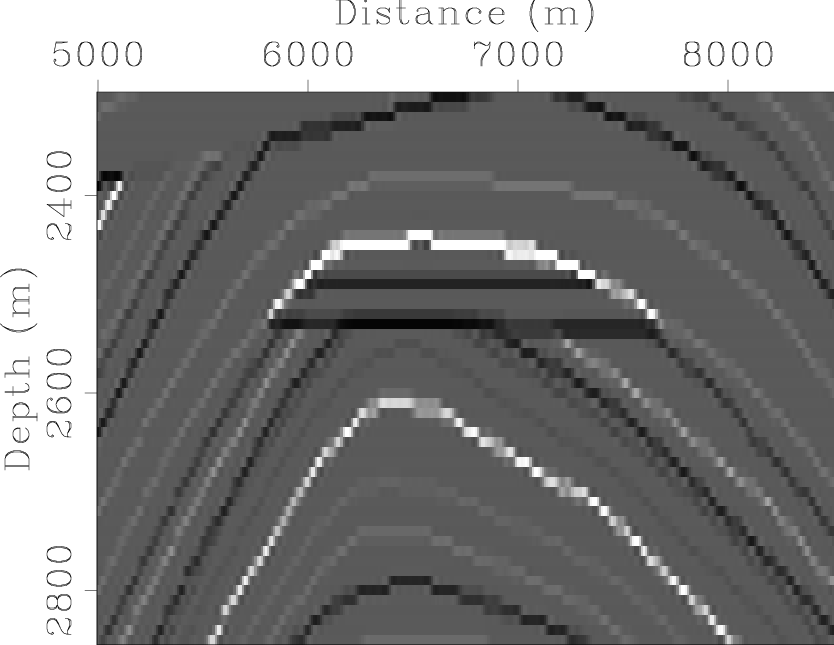
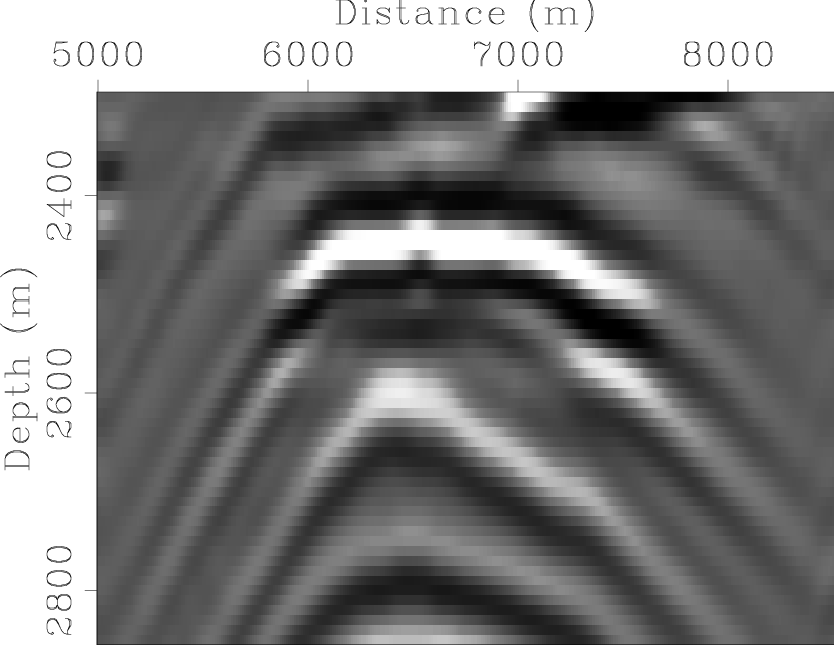
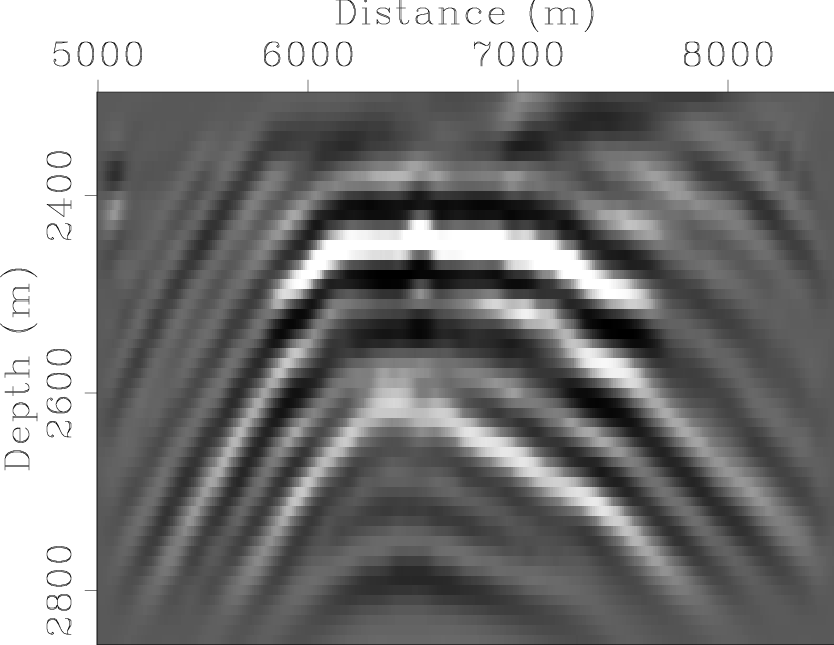
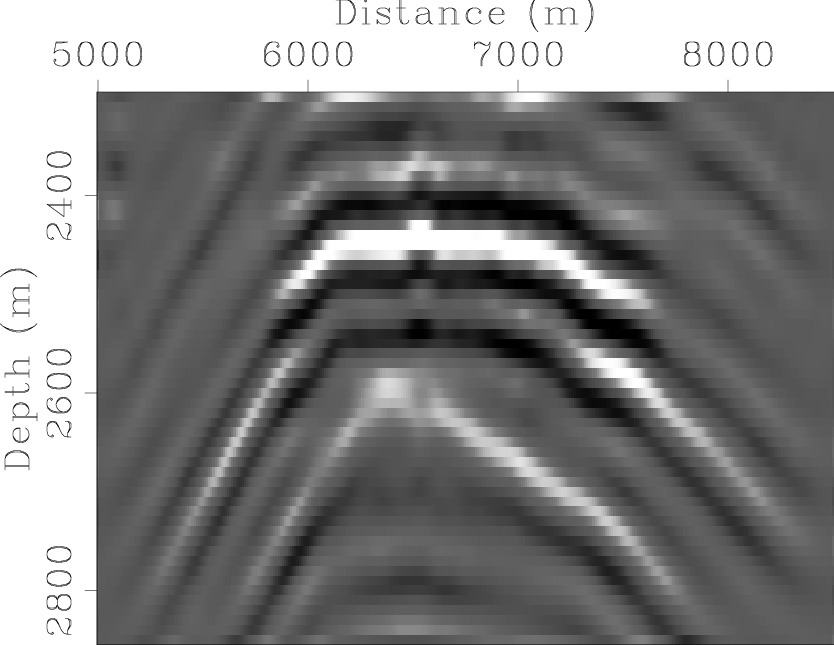
|
|---|
|
marm-refl-target,marm-imag-one-way-target,marm-invt-one-way-target-l2,marm-invt-one-way-target-l1
Figure 7. Target-orineted inversion of the one-way wave-equation Born-modeled data. (a) The true reflectivity, (b) migration, (c) inversion regularized with |
|
|

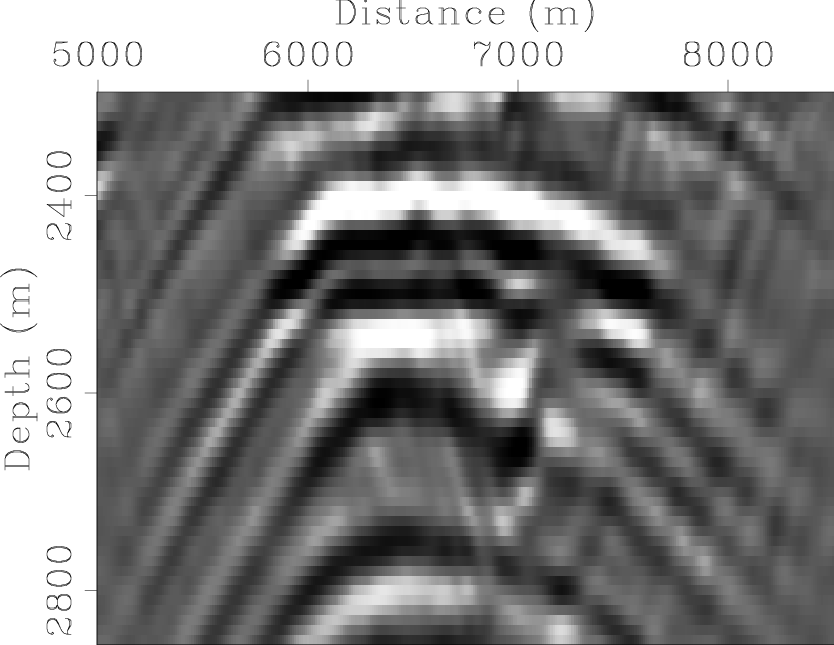
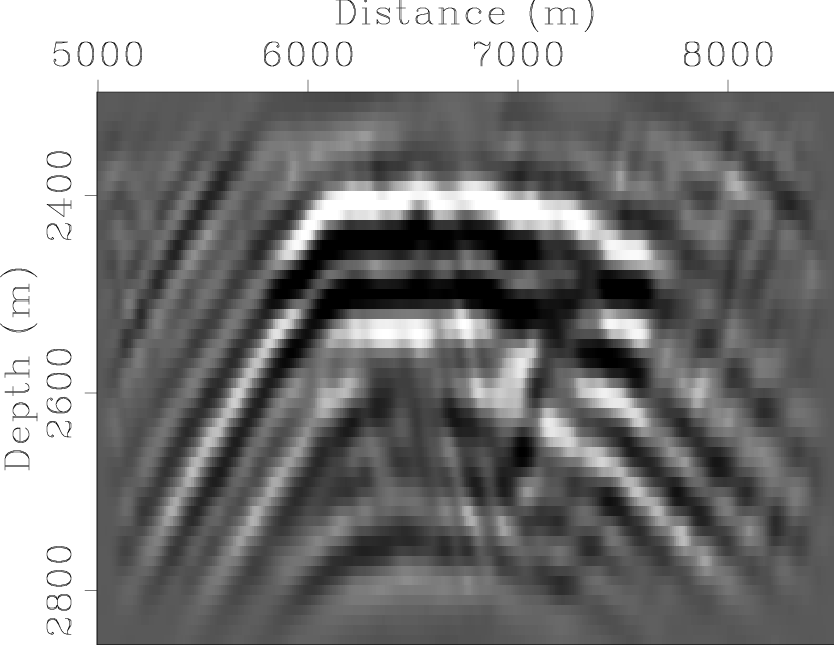
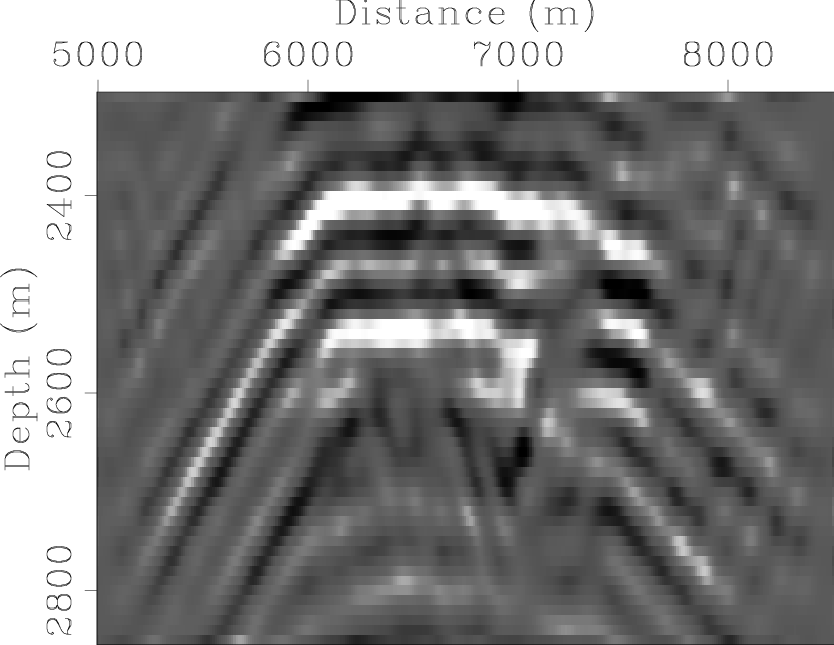
|
|---|
|
marm-refl-target,marm-imag-two-way-target,marm-invt-two-way-target-l2,marm-invt-two-way-target-l1
Figure 8. Target-orineted inversion of the two-way wave-equation finite-difference modeled data. (a) The true reflectivity, (b) migration, (c) inversion regularized with |
|
|
|
|
|
|
Target-oriented least-squares migration/inversion with sparseness constraints |